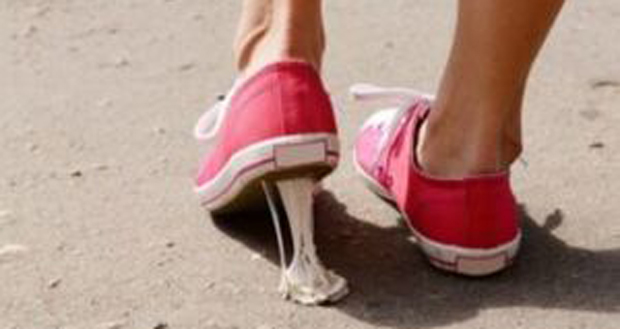Fifty-six councils across the UK are to receive grants totalling more than £1.2 million to remove discarded chewing gum from our streets and prevent it from being littered again.
Antrim and Newtownabbey, Cardiff, Glasgow, Ipswich, Liverpool, Sunderland and Wiltshire are among those to benefit from the second round of funding from the Chewing Gum Task Force.
Launched in 2021, the Task Force was established by Defra and is administered by charity Keep Britain Tidy, with funding provided by gum producers. It aims to clean gum off pavements and put in measures to stop it being dropped in the first place, helping clamp down on anti-social littering.
Estimates suggest the annual clean-up cost of chewing gum for councils in the UK is around £7 million and, according to Keep Britain Tidy, around 77 per cent of England’s streets and 99 per cent of retail sites are stained with gum.
The Chewing Gum Task Force brings together some of the country’s major chewing gum producers, including Mars Wrigley and Perfetti Van Melle. Together, the producers have pledged up to £10 million over five years via the scheme to tackle gum littering.
The latest round of funding includes:
- Grants of up to £25,000 for cleansing with a fully funded bespoke gum litter prevention package.
- Further grants of up to £25,000 for Antrim and Newtownabbey, Cardiff, Doncaster and Glasgow for the fully funded bespoke gum litter prevention package and long-term monitoring and evaluation carried out by not-for-profit social enterprise Behaviour Change.
Environment Minister Rebecca Pow said: “Littering blights our communities, spoils our countryside, harms our wildlife and wastes taxpayers’ money when cleaning it up. That’s why we’re working with gum producers to tackle chewing gum stains.
“After the success of the first round of funding, this next slice will give councils further support to clean up our towns and cities.”
In its first year the task force awarded 44 grants worth a total of £1.2 million, benefitting 53 councils who were able to clean an estimated 2.5km2 of pavement, an area larger than 467 football pitches.
By combining targeted street cleaning with specially designed signage to encourage people to bin their gum, participating councils achieved reductions in gum littering of up to 80 per cent in the first two months. Monitoring and evaluation carried out by Behaviour Change has shown that a reduced rate of gum littering is still being observed six months after clean-up and the installation of prevention materials.
Allison Ogden-Newton OBE, Keep Britain Tidy’s Chief Executive, said: “Chewing gum litter is highly visible on our high streets and is both difficult and expensive to clean up, so the support for councils provided by the Chewing Gum Task Force and the gum manufacturers is very welcome.
“However, once the gum has been cleaned up, it is vital to remind the public that when it comes to litter, whether it’s gum or anything else, there is only one place it should be – in the bin – and that is why the behaviour change element of the task force’s work is so important.”
In 2022, individual councils received grants of up to £20,000 to fund street cleaning and the purchase of cleansing equipment. Larger grants of up to £70,000 were available to two or more councils working together to achieve a greater impact.
In Grimsby, machines made by Eco Removal Systems were used to clean unsightly chewing gum stains in the town centre. Due to the crew wearing the machines as backpacks, the team quickly became known as ‘Gum Busters’. The stains were removed using an eco-friendly detergent made from sugar beet. This was heated and sprayed directly on to the gum to vaporise it.
Four councils – Birmingham, Newport, Glasgow and Belfast – benefitted from a full independent evaluation of their clean-up and prevention signage. A reduction of up to 80 per cent in gum littering after two months was measured as a result of the interventions, through a combination of pre- and post-intervention gum counts and footfall analysis.





